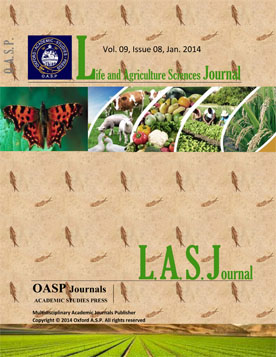Download Center
 |
AGRONOMIC CHARACTERIZATION OF TEPARY BEAN ACCESSIONS IN LIMPOPO (SOUTH AFRICA) Life and Agriculture Sciences Journal (LASJ), Volume 2, Oct 2017 Abstract
Tepary bean (Phaseolus acutifolius) is an annual legume originating from South America and produced in many countries particularly in central and south America. In South Africa, it is grown mainly in Limpopo (in the Sekhukhune area) by small-holder farmers for human consumption. Also, the bean is useful for improving soil fertility through biological nitrogen fixation and is highly tolerant to moisture stress. During digestion, the bean releases sugar slowly, enabling especially diabetic patients to retain protein in the body without risking an increase in body sugar levels. However, there are no commercial cultivars of tepary bean in South Africa and farmers utilize unimproved landraces. Therefore this study was designed to (i) assess and characterize the variability in the local tepary bean germplasm and (ii) identify similar accessions or potential parental material for future genetic enhancement of the crop. It was hypothesized that significant variability in terms of quantitative traits existed among the accessions. The information would be critical for initiating a tepary bean improvement program in South Africa that aims to develop high yielding commercial cultivars adapted to the local agro-ecological conditions. Using a population of 80 local accessions of tepary bean planted in unreplicated observation plots at the University of Limpopo Experimental Farm in 2009, six quantitative traits namely pod clearance, pod length, number of pods per plant, number of seeds per plant, plant height and 100-seed weight as well as three qualitative traits (seed color, hylum color and growth habit) of the crop were scored in the study. The germplasm was uniform in terms of the three qualitative traits. In contrast, the germplasm showed significant variability in terms of the quantitative traits and was classified into eight distinct groups each of which can be isolated as a pure genetic line (genotype). These pure lines will be evaluated further for grain yield on a field basis in the target production areas so as to identify superior lines that may be proposed for release as commercial cultivars or subjected to further genetic improvement. Author(s): K.G. MBELEMBE, I.K. MARIGA, E.T. GWATA |
| Choose an option to locate/access this article/journal | ||
|
Editorial
The process of peer review involves an exchange between a journal editor and a team of reviewers, also known as referees. A simple schematic of OASP's Peer-Review process has been shown in this section.
